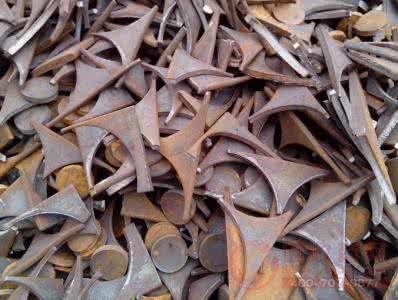According to the composition and properties of the unconsumed scrap, scrap can also be divided into two types: carbon scrap and alloy scrap. (1) Carbon scrap steel, also known as carbon steel, is divided into low carbon steel, medium carbon steel and high carbon steel depending on its carbon content. Low carbon steel (C% < 0.25), mainly used for cold working and welding steel. Medium carbon steel (C%=0.25~0.6%), mainly used for structural parts with high strength requirements. High carbon steel (C%>0.6), mainly used in the manufacture of springs and wear-resistant components. Carbon tool steel is a typical high carbon steel. It can be used to manufacture various cutting tools, molds, gauges, etc. after heat treatment. According to the content of impurities such as sulfur and phosphorus, carbon steel can be divided into ordinary carbon steel, high quality carbon steel and high quality steel. (2) Alloy scrap often contains alloying elements such as a1, B, Co, Cr, Mn, Mo, Ni, Si, Ti, V, W, and rare earth. According to the carbon content of alloy steel, it can be divided into two categories, one is alloy steel containing more carbon; the other is alloy steel containing trace carbon. In addition, depending on the level of alloys and impurities, and the state of supply, there are several special types of scrap iron. (1) Alloy scrap iron alloy scrap iron refers to scrap iron in which the content of copper, molybdenum and nickel in scrap iron is greater than 0.30%, 0.20% and 0.30%, respectively. Typical alloy scrap irons are alloy rolls, spheroid rolls, and the like. There are two kinds of alloy scrap iron: One is alloy pig iron, which is a pig iron made of iron ore containing symbiotic metals such as copper, vanadium, nickel, etc.; The other is alloy cast iron, which is consciously added with some alloying elements to prepare the pig iron. (2) High-sulfur phosphorus scrap iron refers to scrap iron with sulfur content and phosphorus content greater than 0.12% and 1.0%, respectively. Mainly used for pot iron, fire iron (furnace, furnace, hot air furnace tube). (3) Iron filings come from machining processes such as turning, milling, drilling, planing, grinding, sawing, and boring. Before being processed into the furnace, it is supplied in the form of iron filings, and the density is greater than 3t/m3. (4) The blast furnace filling materials such as small slag iron and oxidized dust are all added to the blast furnace, and the iron content should be above 65%, which can be directly converted into crude steel. Novel Spear,Machinery Tools Supplies,Mechanical Equipment Drilling,Tools for Drilling Puyang Junhong Rubber Co., Ltd. , https://www.pyjhxs.com
Salvage spear
(1) Uses.
The salvage spear is an internal fishing tool, which can salvage drill pipe, tubing, sleeve milling pipe, liner, packer, water distributor, spawner, etc. Work or use with other tools (such as jars, flippers).
(2) Classification
Salvage spears are divided into reverse type and non-reverse type according to the use; according to the characteristics of use are divided into retreat type and non-retractable type; according to the structure of the salvage element can be divided into threaded buckle type and slip type
What are the similarities and differences between carbon scrap and alloy scrap?
The salvage spear is an internal fishing tool, which can salvage drill pipe, tubing, sleeve milling pipe, liner, packer, water distributor, spawner, etc. Work or use with other tools (such as jars, flippers).